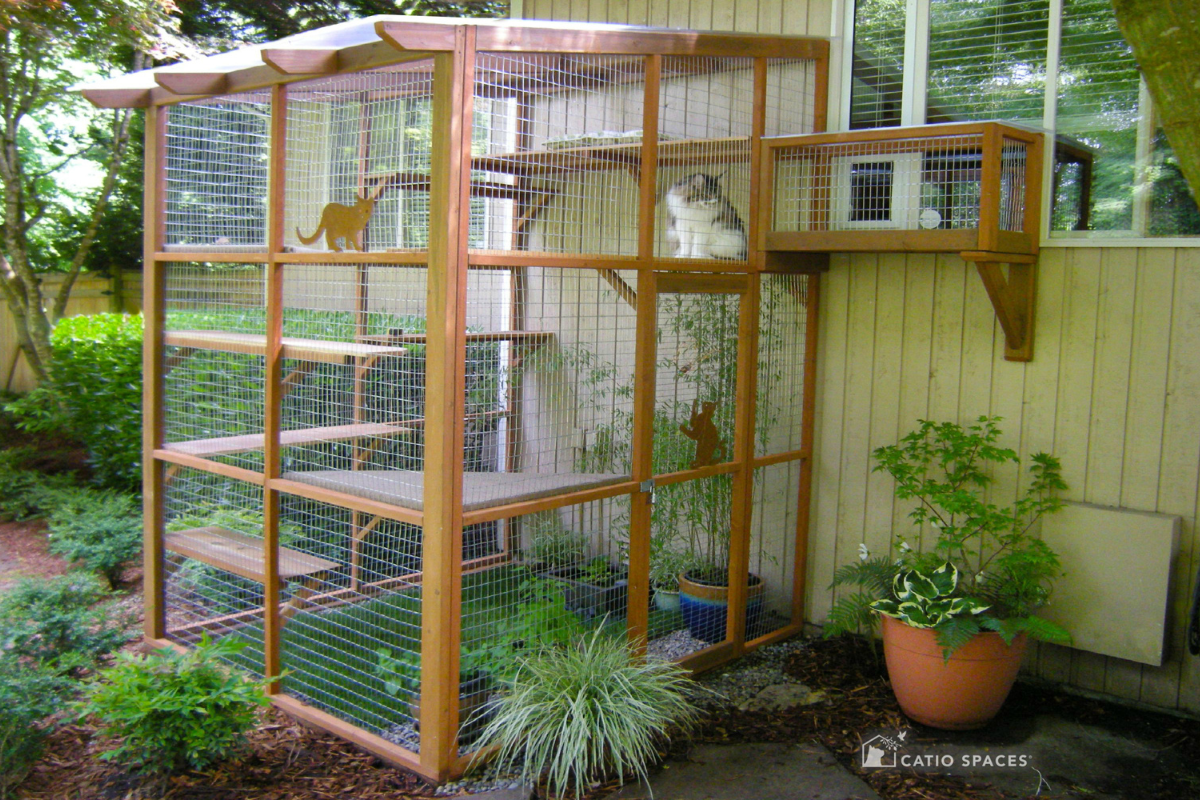By Meg McIntire
It’s true that cats who live indoors tend to live longer, plus keeping them inside helps protect local songbirds, chipmunks, rabbits and others.
However, pet owners recognize cats have a natural instinct to roam and explore, so they are turning to catios to still offer them a taste of the outdoors.
A catio is an outdoor enclosure meant to allow cats to be exposed to nature while keeping themselves and wildlife safe. They can be as simple as a small box that extends out of a window or an elaborate multi-level construction with tunnels and bridges attached to your home. Many cat owners opt to build catios themselves so they can customize them to be as small or as expansive as they’d like by using blueprints available online.
What type of cat could benefit from a catio? “Door dashers, escape artists, alley cat adventurers, fighting tomcats, serial bird killers [and] wishful window watchers,” said Seattle catio designer Cynthia Chomos, who started her business, Catio Spaces, to address the need for safe and visually appealing outdoor enclosures to enhance the lives of cats. Catio Spaces offers dozens of do-it-yourself catio construction designs, and they also work one-on-one with pet owners to create elaborate, two-story high custom builds where the owners and cats can enjoy the space together.
Thinking of creating a catio for your furry feline friends? Here’s a few things to keep in mind when creating the ultimate cat oasis:
- Cats are excellent climbers and sometimes even sneaky diggers, so make sure your catio is totally escape-proof with no openings your cat could squeeze through, even on the top. Also avoid anything that they could catch their collar on or get stuck in.
- Make sure your catio has spots where your cat has access to shade and that all of the materials you’re using are considered pet-safe. Some types of “weatherproof” lumber gets its durability from chemical coatings that stand up against the elements, but can include arsenic and copper compounds that your cat may be better off not chewing on or rubbing against.
- You may have to ask permission if you’re building an extensive catio on your property. If you are a renter, check with your landlord or management company. In some cases, you’ll need a permit from your city or homeowners’ association.
- Pick a quiet time to finally introduce your cat to the new catio and give them time to explore at their own pace. Catnip sprinkled on pet furniture, or treats scattered here and there, will help your cat realize that this new space is all theirs.

